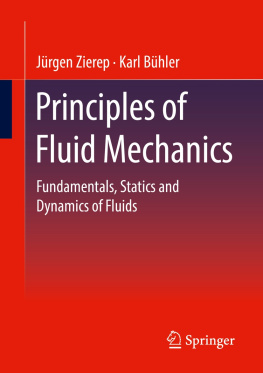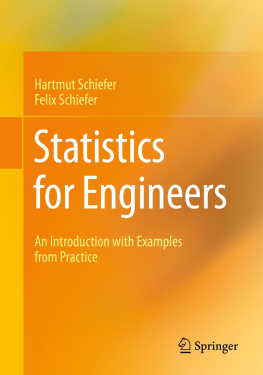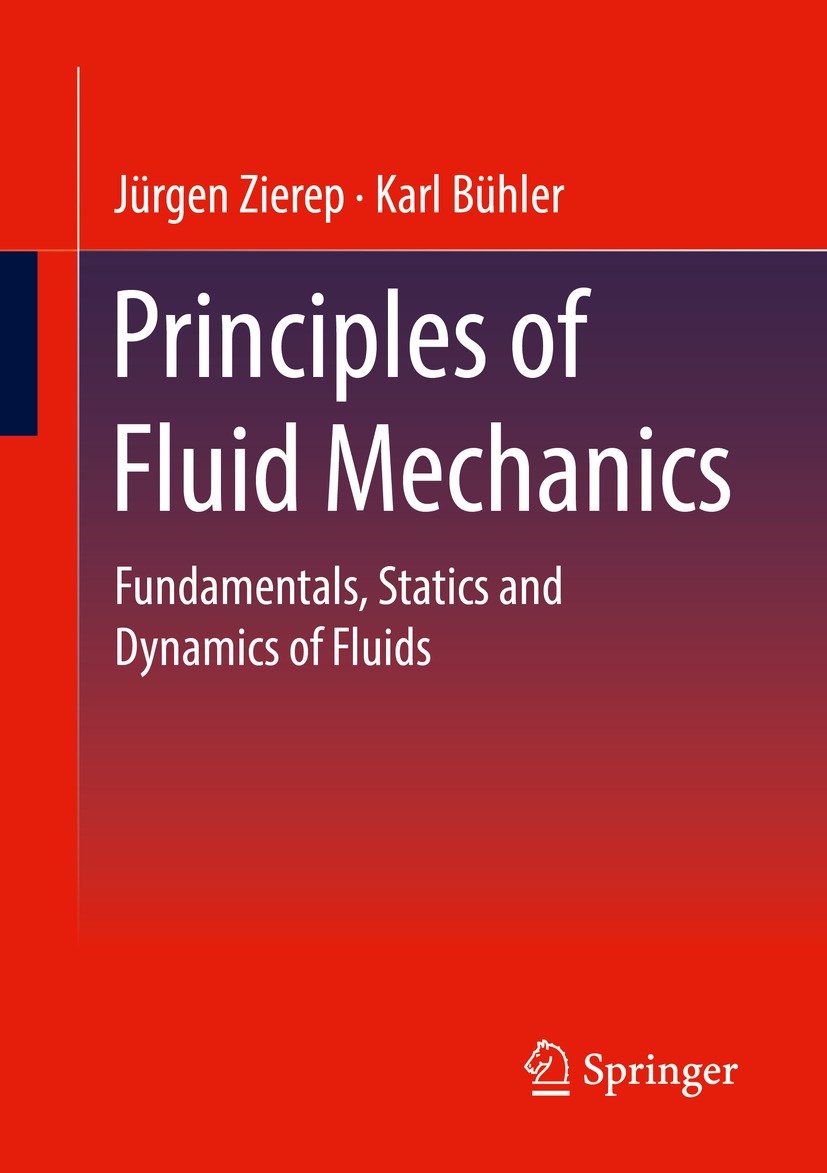Jrgen Zierep and Karl Bhler
Principles of Fluid Mechanics
Fundamentals, Statics and Dynamics of Fluids

Logo of the publisher
Jrgen Zierep
Karlsruhe, Germany
Karl Bhler
Hochschule Offenburg, Offenburg, Germany
ISBN 978-3-658-34811-3 e-ISBN 978-3-658-34812-0
https://doi.org/10.1007/978-3-658-34812-0
This book is a translation of the original German edition "Grundzge der Strmungslehre" by Zierep, Jrgen, published by Springer Fachmedien Wiesbaden GmbH in 2018. The translation was done with the help of artificial intelligence (machine translation by the service DeepL.com). A subsequent human revision was done primarily in terms of content, so that the book will read stylistically differently from a conventional translation. Springer Nature works continuously to further the development of tools for the production of books and on the related technologies to support the authors.
Springer Fachmedien Wiesbaden GmbH, part of Springer Nature 2022
This work is subject to copyright. All rights are reserved by the Publisher, whether the whole or part of the material is concerned, specifically the rights of translation, reprinting, reuse of illustrations, recitation, broadcasting, reproduction on microfilms or in any other physical way, and transmission or information storage and retrieval, electronic adaptation, computer software, or by similar or dissimilar methodology now known or hereafter developed.
The use of general descriptive names, registered names, trademarks, service marks, etc. in this publication does not imply, even in the absence of a specific statement, that such names are exempt from the relevant protective laws and regulations and therefore free for general use.
The publisher, the authors and the editors are safe to assume that the advice and information in this book are believed to be true and accurate at the date of publication. Neither the publisher nor the authors or the editors give a warranty, expressed or implied, with respect to the material contained herein or for any errors or omissions that may have been made. The publisher remains neutral with regard to jurisdictional claims in published maps and institutional affiliations.
This Springer imprint is published by the registered company Springer Fachmedien Wiesbaden GmbH part of Springer Nature.
The registered company address is: Abraham-Lincoln-Str. 46, 65189 Wiesbaden, Germany
Preface to the 11th Edition
The Principles of Fluid Mechanics (Grundzge der Strmungslehre) has proved very popular with teachers and students over the past 40 years through its 10 editions.
We have been able to ascertain this time and again on the basis of lectures and discussions at home and abroad. The statements of the preface of the first editionespecially concerning the application of the important momentum theoremare still valid.
First, to gain knowledge on examples of fluid mechanics and then, second, to consider the control space and the flow data on the boundary are important prerequisites for the successful application of the momentum theorem.
Over time, the desire arose, e.g., during lectures at the TH Budapest, for further current exercises in fluid mechanics. Preference is given to problems with the following alternative: inflow or outflow from containers, without or with friction, stationary or unsteady, incompressible or compressible. The implementation of the conservation laws for mass, momentum, and energy based on the initial and boundary conditions in concrete problems is still often difficult.
The energy theorem is central to many flow problems today. This is illustrated in the following examples. The energy theorem is derived and applied in many forms. Interesting and typical are the values in the RayleighStokes problem, where the time variation of kinetic energy, dissipation, and wall shear stress power occur simultaneously. In the potential flows of viscous media, the physical processes take place on the energetic side. The physical principles of these viscous potential flows are covered in the text and the exercises on vortex flow and sourcesink flow in the cylinder gap. These statements play an increasingly important role today where the energy balance is concerned. Up to now, they have been little represented in the textbooks of fluid mechanics.
The book is intended for students of engineering and physics at universities and colleges to accompany and reinforce lectures on fluid mechanics and for self-study. This book is also useful for engineers working in practice as an introduction to and consolidation of fluid mechanics fundamentals.
We have dealt with some relevant problems of this kind in detail and added them at the end of the book. Again, it is the case that the reader must often reach for paper and pencil in order to be able to follow the solution path proposed by us.
We would like to thank the mechanical engineering editorial office of Springer Vieweg for their active support and great confidence in the publication of this book and the extremely gratifying cooperation.
Jrgen Zierep
Karl Bhler
Karlsruhe, Germany
November 2017
From the Preface of the 1st Edition
The present book Principles of Fluid Mechanics (Grundzge der Strmungslehre) originated from introductory lectures which I have been giving for about 20 years at the University of Karlsruhe (TH). Here, I had the interesting task of introducing fluid mechanics to students after their preliminary examinations in a 4-h, one-semester lecture. The spectrum of the listeners was broad. It ranged from mechanical and chemical engineers to physicists, meteorologists, and mathematicians. This fact, together with the time available, determined the content and scope of the material presented. The aim was therefore not to present everything (that can be done in special lectures), but to choose a presentation that was as interesting as possible and easy for the students to grasp and apply.
A few words about the structure. Unlike most presentations of fluid mechanics, the momentum theorem is treated late. There are good reasons for this. Despite its simple formulation, it is and remains the most difficult theorem in fluid mechanics. The difficulty lies in the appropriate choice of the control space and the flow data used on the boundary. This is where a lot of knowledge goes in, which one has to gather beforehand when dealing with examples of fluid mechanics. We have made this experience again and again.
I have endeavored to follow a systematic structure. This is done by starting with the simplest and proceeding to the questions that arise in the numerous applications and are of great interest today. It is important, for example, to know from the beginning which and how many equations are available for the flow quantities. In some of the questions treated, one will feel certain attention to detail. This seems to be justified where students bring little information from other lectures. On the other hand, the beginner must have a thorough and detailed demonstration of the most important tools. That there will be compromises is clear to every lecturer.













